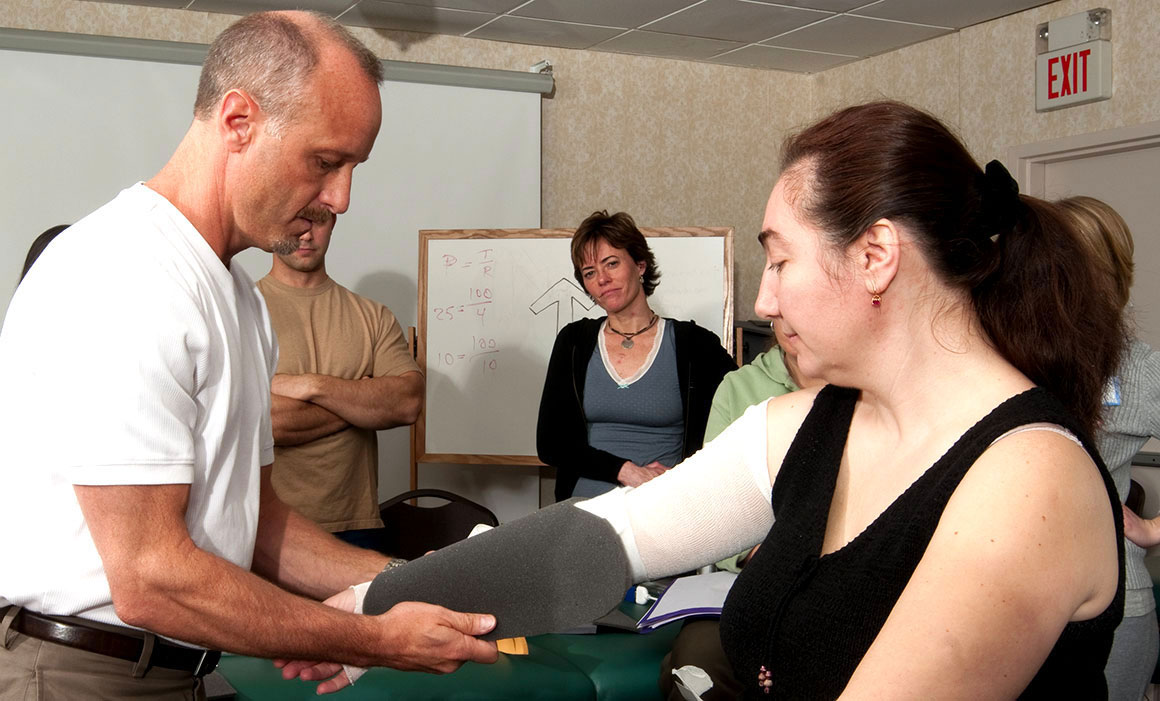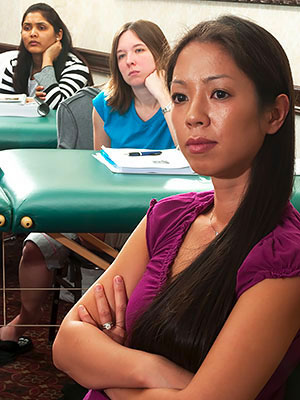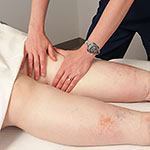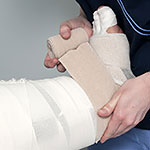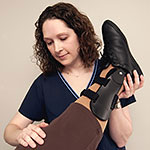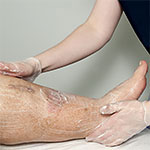COURSE OBJECTIVES
Each student will be trained in the four components of Complete Decongestive Therapy. Upon completion of the class, the therapist will be able to differentiate between a variety of peripheral edemas as well as understand the applications, medical indications, and contraindications of MLD and CDT. Additionally, the therapist will be able to establish a CDT treatment plan for individuals with primary or secondary lymphedema and perform the indicated treatment.
CLASS TOPICS
- anatomy, physiology, and pathophysiology of the lymphatic system
- basic techniques and sequences of Manual Lymph Drainage (Vodder technique)
- indications and contraindications of Manual Lymph Drainage (MLD) and Complete Decongestive Therapy (CDT)
- differential diagnosis
- treatment of primary and secondary lymphedema
- lymphedema bandaging techniques for upper and lower extremities
- remedial lymphedema exercises
- hygienic skin and nail care for lymphedema
- measuring and fitting techniques for lymphedema support garments
- patient evaluation and weekly measurement (circumference and volume)
- home maintenance and self-treatment for lymphedema
- medical billing and reimbursement for clinical lymphedema management
INCLUDED MATERIALS & SERVICES
- comprehensive course and online reference guides
- "Lymphedema Management" textbook co-authored by Steve Norton
- access to online educational video set
- upper and lower extremity bandage kits
- informational portfolio detailing current treatment product
- lifetime listing in the Norton School therapist referral database
- FREE lifetime access to LymphedemaJobs.com, the only dedicated career resource for the lymphedema therapy field
CLASSROOM ENVIRONMENT
Much of the praise received on Norton School certification course evaluations focuses on the classroom's unique educational climate. Students report an uplifting, enjoyable, and engaging environment that is highly conducive to learning. Our instructors strive to create an atmosphere in which every student feels capable of interacting with the class through lively discussion. The student body's eclectic mix of licensed professionals contributes a multilayered perspective to classroom discussions, enriching appreciation for the critical role this unique form of therapy plays throughout the modern healthcare system. A balanced blend of didactic and practical work creates daily lessons that captivate and maintain student attention. Because manual techniques are regularly performed and received by all participants, the Norton School program is not only learned conceptually but is experienced and absorbed physically as well. Patient visitation, evaluation, and inspection, along with observation of treatment, provide exceptional insight into the precise delivery of patient care. It is this seamless integration of theoretical and practical components, while in a relaxed and intimate setting, that makes the course an invaluable and unforgettable experience for Norton School alumni.
COMPLETE DECONGESTIVE THERAPY (CDT)
Complete Decongestive Therapy (CDT) is the most successful treatment for chronic extremity lymphedema. Post mastectomy lymphedema and other related conditions respond extremely well to this gentle, non-invasive, and highly effective therapy. CDT is sometimes referred to as Complete/Complex Decongestive Physiotherapy (CDP). CDT consists of the following four steps:
1. Manual Lymph Drainage (MLD)
MLD is a very gentle manual treatment that improves the function of the lymphatic system throughout the body. In the 1930s the techniques of MLD were first introduced by Dr. Emil Vodder, PhD, MT from Denmark. MLD is becoming widely recognized in the United States as a treatment for many pathologies including post surgical swelling, post traumatic edema (e.g., sports injuries), migraine headaches, rheumatoid arthritis, and fibromyalgia. MLD is further used to promote general relaxation and for cleansing (detoxification) of the skin and superficial fascia. In lymphedema therapy MLD is used to reroute the lymph flow around blocked areas into healthy lymph vessels, which drain into the venous circulation.
2. Compression Therapy
Compression therapy, through the use of multilayered bandages, increases tissue pressure and is applied between treatments to prevent the re-accumulation of evacuated edema fluid. Compression therapy also increases the efficiency of the muscle and joint pumps and is used until the limb is sufficiently decongested to be fitted for compression garments.
3. Exercises
Remedial exercises, with the bandages in place, are performed to activate the muscle and joint pumps of the affected extremity. This results in an increase in lymphokinetic activity and, over time, in further reduction of the swollen limb.
4. Skin Care
Skin care and general hygiene are essential for eliminating bacterial and fungal growth, either of which can cause repeated attacks of cellulitis or erysipelas. Because infections are very common complications of lymphedema, meticulous skin and nail care are integral elements of CDT.
PREREQUISITES
The following professionals are eligible for training: PTs, PTAs, OTs, COTAs, SLPs, RNs, LPNs/LVNs, MDs, DOs, ATCs, DCs, and MTs
**Massage therapists must show proof of completion of a minimum 500 hours training program or be certified through the NCBTMB.
HOME STUDY PROGRAM
The Home Study Program is comprised of the following components: (1) multimedia "Nine-Part Theoretical Home Study" online course; multimedia "Lymphedema Bandaging: Video Practical Instruction" online course; multimedia "Manual Lymph Drainage: Video Practical Instruction" online course; (2) various online theoretical reference components; (3) a Course Manual and Online Reference Guide; (4) online educational video series covering various lymphedema topics; (5) "Lymphedema Management" co-authored by Steve Norton. 45 hours of home study are expected of the student. The Home Study Program will provide an opportunity for the student to develop an extensive knowledge of the theoretical components of lymphedema therapy.
CLASS TIMES
A total of 135 hours of instruction is provided in the CDT Certification Course comprised of 90 hours of classroom instruction and 45 hours of home study. Class hours are 8:00am–7:00pm.
CERTIFICATION & CONTINUING EDUCATION UNITS (CEUs)
Upon completion of the course and successful passing of the written and practical final exams, participants will receive a certificate of completion confirming their status as a Certified Lymphedema Therapist (CLT) certified in Manual Lymph Drainage (Vodder Technique)/Complete Decongestive Therapy.
CEUs are available for Physical Therapists through the Florida Physical Therapy Association (FPTA), and for Massage Therapists through the NCBTMB. For questions about receiving CEUs please call us toll-free at (866) 808-2249.
AOTA Approved Provider CE; AOTA Approved Provider of continuing education. This Distance Learning and Live blended format activity is offered at 13.5 CEUs, educational level introductory & intermediate, categories 1, 3. The assignment of AOTA CEUs does not imply endorsement of specific course content, products, or clinical procedures by AOTA or indicate AOTA approval of a certification or other professional recognition.
SPECIAL NEEDS REQUESTS
This continuing education activity is fully accessible to special needs students and addresses the needs of individuals with physical impairments, sensory impairments (e.g., hearing, speech, vision), and emotional and learning disabilities. The provider ensures an instructional environment that enhances the learning process. Resource or reference materials and instructional aids and equipment are current, appropriate for the learning activity, and support the intended learning outcomes. The provider attempts to create a fully accessible educational environment from which all learners can benefit, and provides an opportunity for learners to identify special needs in advance of the activity.
TUITION
Tuition for the CDT Certification Course is $3,300. A deposit of $900 is required at the time of registration and will hold a spot in the course until the remaining balance is received no later than two (2) weeks prior to the first day of class.

